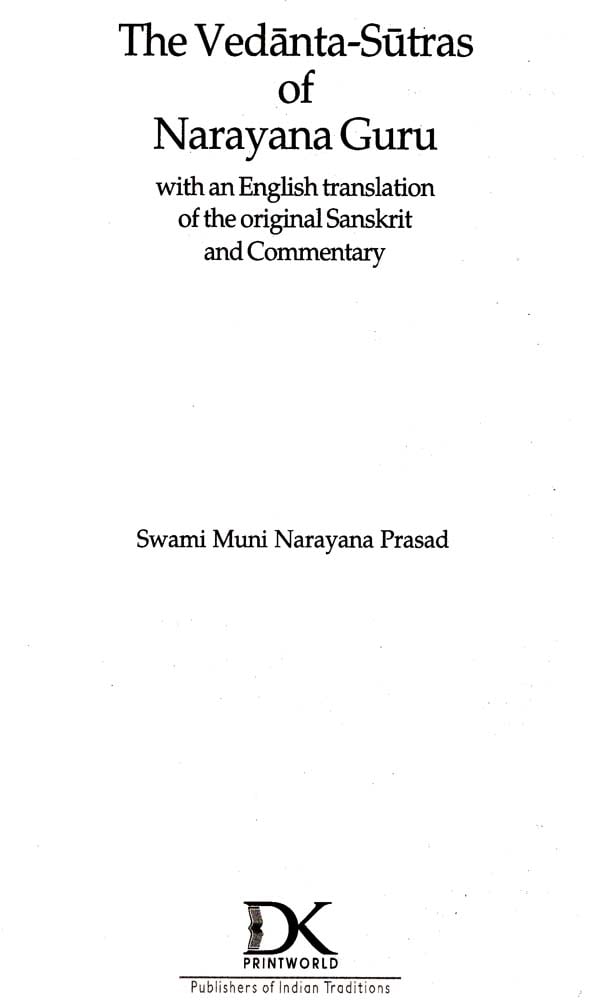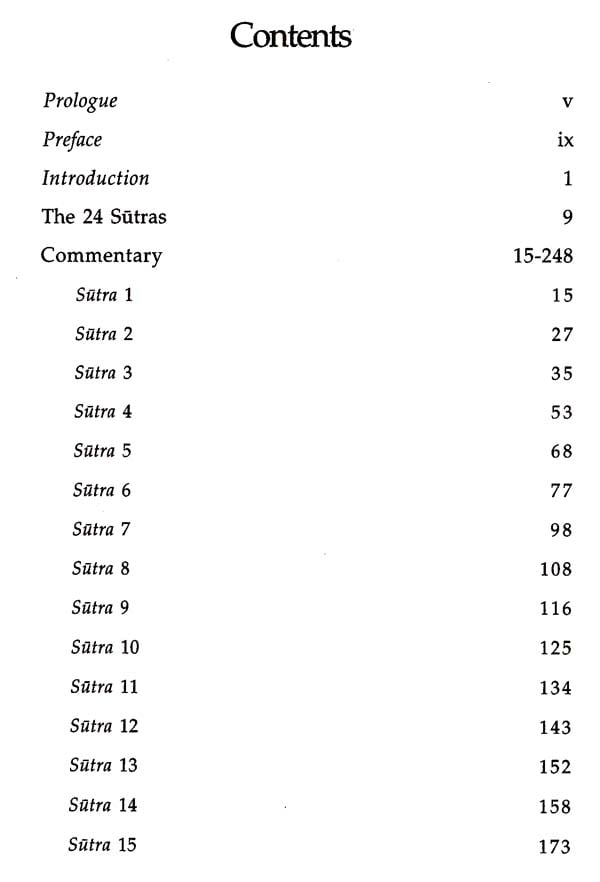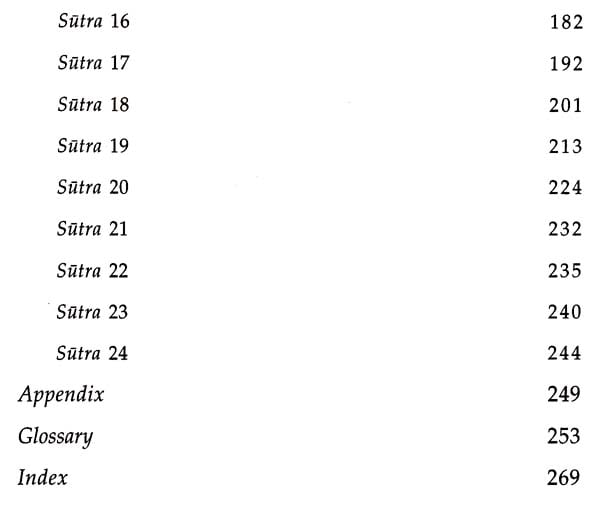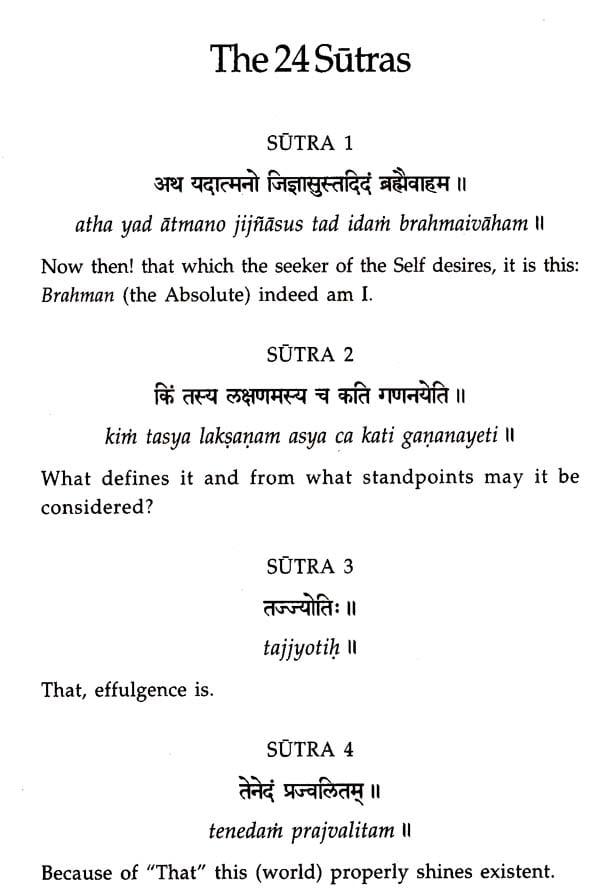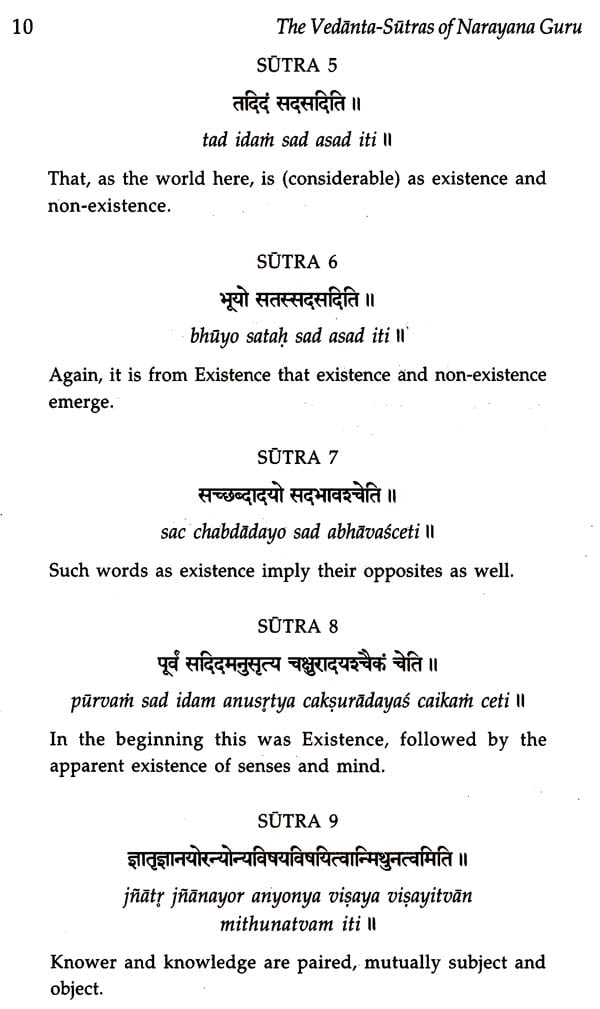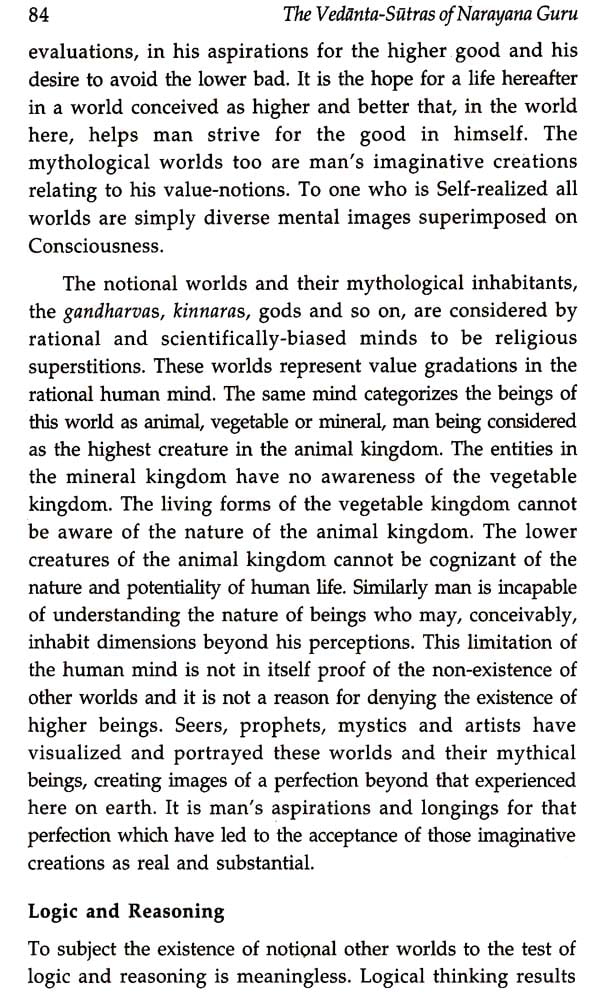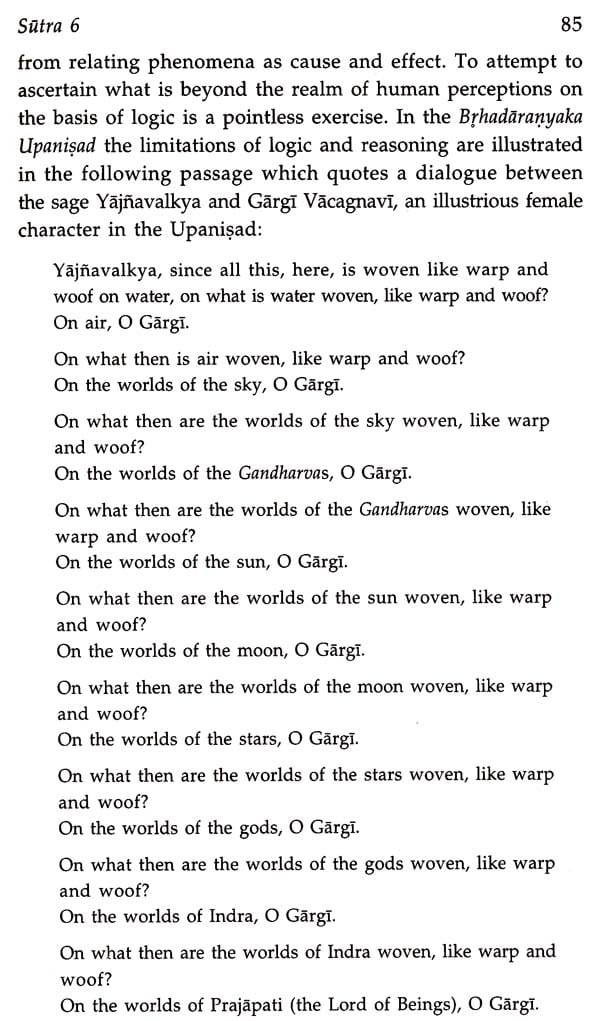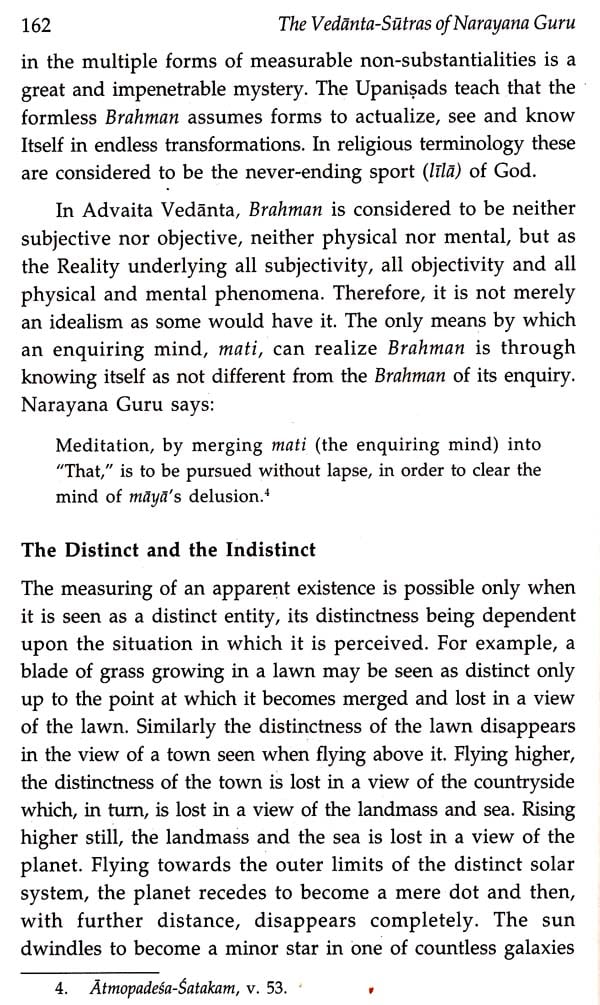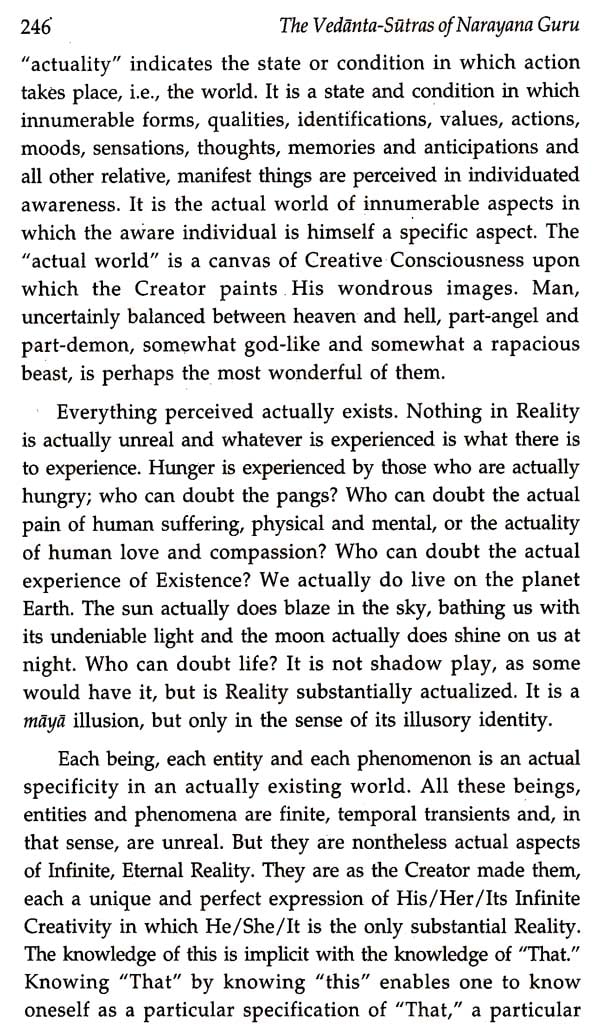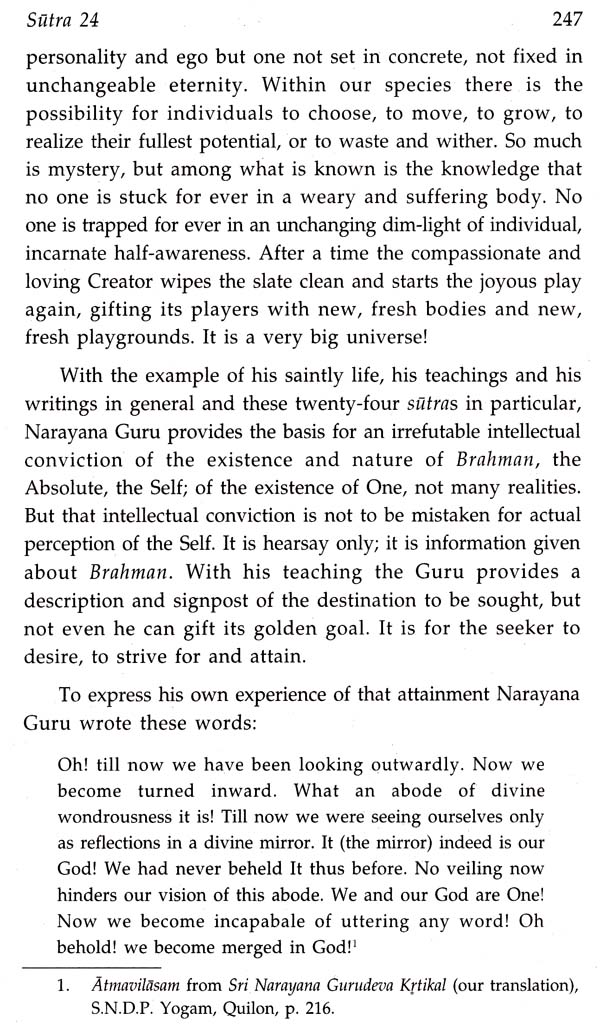
The Vedanta Sutras of Narayana Guru
Book Specification
| Item Code: | NAW054 |
| Author: | Muni Narayana Prasad |
| Publisher: | D. K. Printworld Pvt. Ltd. |
| Language: | English |
| Edition: | 2013 |
| ISBN: | 9788124606575 |
| Pages: | 281 |
| Cover: | HARDCOVER |
| Other Details | 9.00 X 6.00 inch |
| Weight | 540 gm |
Book Description
Narayana Guru's Vedanta Sutras reveal the essential message of the Vedanta in 24 beautifully-fluent sutras. His simple and direct revaluation and restatement of the Vedanta, in general, has been found to be comprehensive and contemplative in its insight, reconciling the superficial disagreements of the Vedantic schools and restoring the pristine vision of the Upanisadic sages. In this scientific age, his work has often been acclaimed for its relevance. His Vedanta Sutras, compact yet profound in manner, is yet another example of this.
The thoroughly-engrossing commentary of Swami Muni Narayana Prasad is a unique effort. Its hallmark is his clear avoidance of exegesis with greater reliance on his personal conviction. Swami Muni Narayana Prasad places Narayana Guru on par with the siitrakaras like Badarayarta, Jaimini, Gautama and Kartada with this beautiful elucidation.
The votaries of the Vedas were very pragmatic people. They wanted to experience whatever was suggested in samhitas. The Samhitas were mainly preserved by learned families keen on acquiring wisdom. Out of the Vedas arose instructive injunctions on applying the formulae of the Vedas in the daily life of people. The literature that came to be formed in that period is called the Brahmanas. In childhood, adolescence and youth, young Indians memorized the Vedic chants and in their transition from youth to middle age they were very enthusiastic in experiencing whatever was passed on to them by their elders.
In the cultures of both East and West such questions have always provoked philosophical thought and religious expressions which in earlier times were one and the same thing. They became two, in the West, only after the so-called "dark ages" when a general aversion developed, especially among thinkers, towards religion in the aftermath of the Inquisition. In the East, however, they have remained inseparable. Therefore Indian religious scriptures are, in essence, philosophical works.
In the West the different schools of philosophy derive from different sources. But the schools of Indian philosophy all derive from one primary source, the Vedas. Each of these schools places emphasis on particular aspects of the Vedas. Nyaya gives primacy to the categories of existence, Vaisesika to the nature of basic substances, Samkhya to the evolutionary aspect of nature, Yoga to practical discipline, Purva Mimamsa to Vedic rituals, and Uttara Mimamsa, or Vedanta as it is more commonly known, to the acquisition of knowledge of Ultimate Reality.
To seek, find and know the real nature of oneself and the world is the ultimate human achievement transcending and subsuming all others where individualized life experience is concerned. Its attainment corrects the errors of man throughout his history in understanding existence, and the mistaken views of dogmatic religion and mechanistic materialism which have conditioned his mind and kept from him the knowledge of his true nature. Gaining that knowledge brings him the gifts of wisdom which enable him to live free of fear, desire and anger, fulfilled in life and at peace with himself and the world.
This wisdom, too, is one. Through the course of human history there have always been some few enlightened visionaries, a few saints and seers, whose mission has been to restore to light the perennial knowledge of ultimate reality which, over the long passage of time, becomes lost to view. The interpretations of their vision have, of course, been expressed in the particular language and context of the time, culture, religion and social environment in which they lived. Inevitably, those expressions have differed very much, but they have all proclaimed the same oneness of reality.
Narayana Guru was one such exceptional seer and sage, a knower of reality gifted with mystic insight. His background is that of India's Hindu culture. He was born in 1854 in a village near Trivandrum in the south-west Indian state of Travancore, now part of modern Kerala. His father, a teacher, was a scholarly man versed in Astronomy, Sanskrit and Ayurvedic medicine; his mother was a simple, graceful, kindly woman endowed with beauty and sensibility.' Nanu, as he was then called, was acquainted with the Hindu scriptures and with the expressions of perennial wisdom contained in them at an early age. In his youth he mastered Sanskrit and became conversant with the doctrines of the Vedanta philosophy expounded by the great Upanisadic rsis (seers). While still a young man he took the path of sonnyasa (renunciation) and undertook the austere life of a mendicant monk. In early middle age he attained enlightenment and quietly began to teach.2 He was soon recognized to be a very great guru by an ever-growing number of devotees. His life and teachings soon began to assert an enormous and enduring influence in south India inspiring many great social, economic and educational improvements there, especially for the lowly poor and oppressed of Travancore. He died in Travancore in 1928. We know him today, first and foremost, as a spiritual teacher in the Vedanta tradition, a Vedantic To. His teaching is a revision and restatement of Vedanta's central message of the non-dual nature of existence. As Dr Paul Deussen so eloquently puts it in his Outline of the Vedanta System: "On the tree of Indian wisdom, there is no fairer flower than the Upanisads and no finer fruit than the Vedanta philosophy."
**Contents and Sample Pages**
